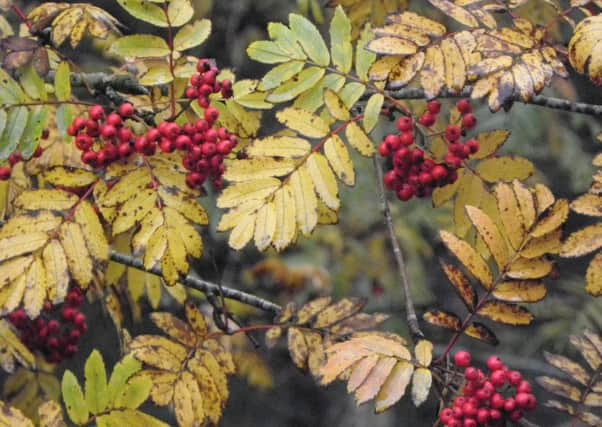Rowans have long been associated with myth, magic and witches!


There wasn’t much to see on the loch, other than a solitary little grebe, but the surrounding trees were a different matter.
As I approached a group of heavily berry-laden rowans, a huge flock of around 200 redwings suddenly exploded skywards. These recently arrived winter thrushes were feeding up on the bountiful harvest of rowans, before dispersing into smaller groups and spending the winter foraging for food all over the country.
Advertisement
Hide AdAdvertisement
Hide AdAt this time of year, rowans are the most plentiful and nutritious berries available to them and the fieldfares, thrushes and blackbirds, who also relish them. Just as well, as this is how the tree disperses its seeds. Unfortunately to us humans they are hard and bitter with little culinary use other than to make jelly, which is a pity as they are so easy to pick and in good supply. I have made wine from them previously, but it was a bit dry for my delicate palate!
The rowan’s other name is mountain ash, due to the similarity of leaf, but it is not related to the common ash. The colour red was considered to be the best colour for fighting evil, and so the rowan, with its bright red berries, has long been associated with magic and witches. Its old Celtic name is ‘fid na ndruad’, which means wizards’ tree. In Ireland it was planted near houses to protect them against spirits, and in Wales rowan trees were planted in churchyards. Cutting down a rowan was considered taboo in Scotland.
The wood was used for stirring milk to prevent it curdling, and as a pocket charm against rheumatism. It was also used to make divining rods.
The wood is pale yellow-brown with a deeper brown heartwood. It is strong, hard and tough, but not particularly durable. It is sometimes used in turnery, furniture, craftwork and engraving.
Advertisement
Hide AdAdvertisement
Hide AdFor anyone interested in the flora of the Central Borders, a new booklet has just flown from the prolific pen of Hawick botanist Michael Braithwaite.
Entitled “Floras of Hawick’s Road and Rail Routes compared”, it is published by the Hawick Archaeoligical Society and is available from the author by e-mail to [email protected]